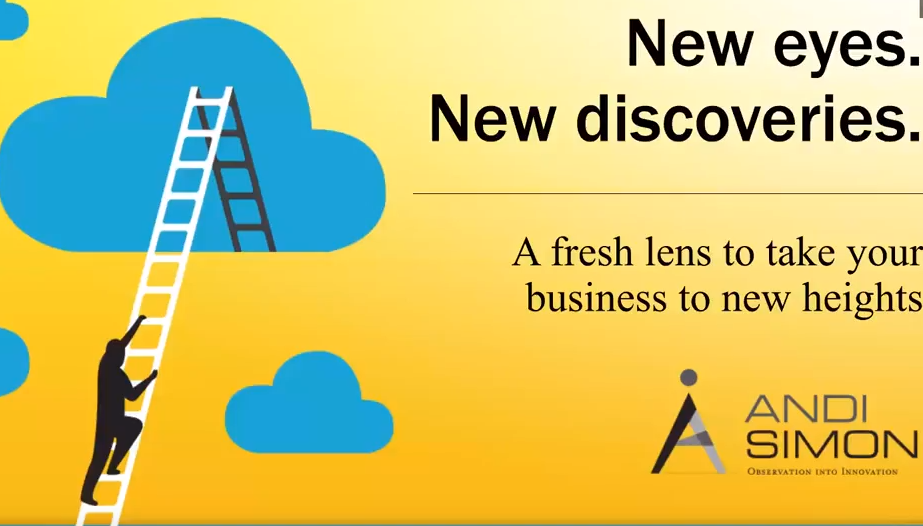I often get calls from HR directors who say, “Help! I have a new CEO and he wants me to change the culture.” And so I ask, “What’s the problem?” And the HR person will say, “I don’t really know what our culture is.” And my answer to that is, “Well, what would the new CEO like it to become?” And they’ll say, “I’m not sure, but it isn’t working so a new culture is what we need.” Typically, they just want something different but they don’t really know where they’re going or how to get there. And they’re not alone.
Many clients come to us because the times are changing and they know they have to adapt but they don’t know how.
Change is something people hate. The brain hates it. The culture hates it. Organizations hate it. But as corporate anthropologists, we are convinced that what works—yes, really works—to successfully change an organization are the methods, tools and techniques of anthropology.
Over and over again, we find that high-performing organizations thrive when they unleash the talent, passion and potential of their people. That has everything to do with building a better culture, and changing a culture for the better is what corporate anthropology is all about.
To explain the kind of work we do at SAMC to help organizations change, I recently produced this webinar. It will help you understand the pain and challenges of change and why we just hate to do it. Then it will take you through the building blocks needed to change people. I’ll touch on a few key concepts here in this blog but to get the full story, you really need to watch the webinar. Just click on the graphic below.
To read the full transcript of the webinar, click here.
Is your organization’s culture of today the right one for tomorrow?
With many of our clients who come to us to help them change their culture, we first begin by getting them to take the OCAI, the Organizational Cultural Assessment Instrument, a detailed survey developed by University of Michigan professors Dr. Kim Cameron and Dr. Robert Quinn to assess a company’s current and preferred culture, as well as its desire to change.
 Through their research, Drs. Cameron and Quinn found that there are 4 dominant types of culture for organizations: Clan, Adhocracy, Hierarchy and Market-Driven. For instance, competitors—market-driven companies—are good at making money but don’t collaborate well. Firms that are great at collaborating often don’t get anything done. Entrepreneurs need rules from the hierarchical Type As who manage them or they won’t get results. Do you know what your company is?
Through their research, Drs. Cameron and Quinn found that there are 4 dominant types of culture for organizations: Clan, Adhocracy, Hierarchy and Market-Driven. For instance, competitors—market-driven companies—are good at making money but don’t collaborate well. Firms that are great at collaborating often don’t get anything done. Entrepreneurs need rules from the hierarchical Type As who manage them or they won’t get results. Do you know what your company is?
What does this mean for change in your organization?
We’re going through a time of great transformation, with all kinds of new things coming at us: blockchain, artificial intelligence, robots, you name it. Each type of culture has helped us adapt, but what does it all mean for a company going forward today? This is not about thinking harder or staying longer at work. It’s about getting out of your office and seeing what’s going on with your customers. Also, go out and watch non-customers using, or not using, your product. What can you learn? How can you better meet their unmet needs?
A brief overview of a successful change process
People find comfort in their culture. It’s safe. They love it even when they’re frustrated by the way it works. You’ll hear it all the time, “I really don’t like the way it works but that’s the way we do it here.” Plus, their brains hate to change. So do their habits. Change requires energy. But with a detailed strategy, lasting change really can happen. Here are 6 steps to think about and then implement with your team:
1. Visualize the future. You’re going to have to create an image, a story. Really visualize it. What do you want to see happen? How will you know it is happening?
2. Explain why over and over again. Don’t think that saying it once at a staff meeting is sufficient. It’s necessary for people to hear the story over and over, as if you’re marketing and advertising to them.
3. Plan small wins to learn and test the results so your people can see the change plan actually working. For example, if you want to be more collaborative, you’ll need a different way of making decisions and solving complex problems by engaging people from different departments. Maybe even have customers collaborate with you on solutions so they buy into them too.
4. Peer pressure. Figure out who the influential people are and engage them as leaders in the process. If not, they will be very happy to undermine it for you underneath.
5. Over-communicate. Explain everything over and over again. When people know why the change is necessary, they stop resisting. Explaining why shows them that you care and have esteem for them.
6. Metrics matter. If you don’t have good metrics, your people will figure out ways to show that change isn’t happening. If you have good metrics, it’s going to be hard to argue with it.
Instead of hating and avoiding change, are you ready to embrace it? Let’s talk.
This might be a good time to try “a little anthropology” to help your business grow. Contact us to schedule a consultation to find out how we might help your organization drive change, overcome challenges and reach its potential for success.
From Observation to Innovation,

Andi Simon, Ph.D.
Corporate Anthropologist | President
Simon Associates Management Consultants
Info@simonassociates.net
@simonandi
Don’t miss an episode of our On The Brink podcast!
Subscribe now




